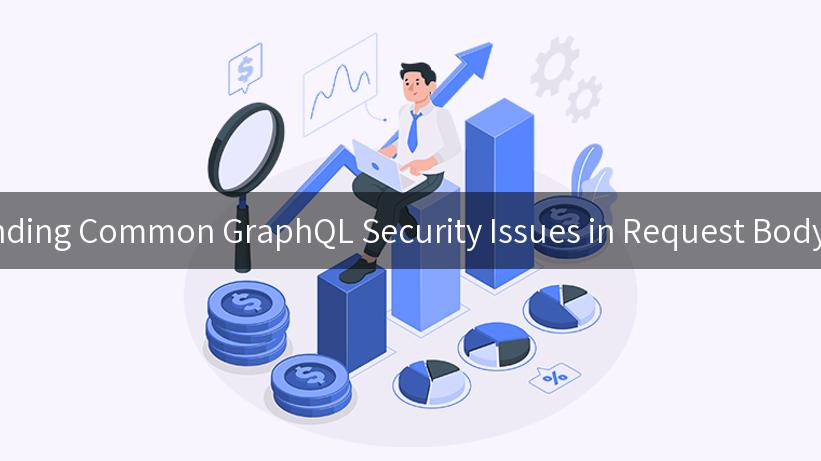
The advent of GraphQL has revolutionized the way APIs are structured and consumed. However, with these advances come a suite of security concerns that developers and organizations must be vigilant about. In this article, we will explore common GraphQL security issues, especially concerning request body management, enhancing our understanding with insights into AI security, Gloo Gateway, AI Gateway, Basic Identity Authentication, and API Keys.
Introduction to GraphQL and Security
GraphQL provides an efficient, powerful, and flexible way to interact with APIs. Instead of dealing with multiple endpoints, clients can query exactly what they need in a single request. However, this flexibility also poses a variety of security risks, particularly in how request bodies are handled. Misconfiguration or oversight in these areas can lead to potential vulnerabilities that exploit the API’s weaknesses.
Why Focus on Request Body Handling?
In GraphQL, the request body often contains complex queries that can include variables, operation names, and additional metadata. This makes it critical for developers to ensure that they implement robust security measures when processing these requests. Here are few key areas of concern:
- Overly Generous Query Exposure: GraphQL’s flexibility can inadvertently expose sensitive data if proper access controls are not enforced.
- Denial of Service Attacks: Complex queries that take a long time to resolve can be used to overload servers.
- Injection Attacks: Just like SQL injection, GraphQL can experience injection vulnerabilities if the input is not sufficiently validated or sanitized.
APIPark is a high-performance AI gateway that allows you to securely access the most comprehensive LLM APIs globally on the APIPark platform, including OpenAI, Anthropic, Mistral, Llama2, Google Gemini, and more.Try APIPark now! 👇👇👇
Core GraphQL Security Issues in Request Body Handling
1. Query Complexity and Depth Limiting
GraphQL queries can potentially be deeply nested and very complex. Without adequate limits on the depth or complexity of queries, attackers can send malicious queries that overload the server, leading to Denial of Service (DoS) conditions.
Mitigation Strategies
- Implement depth and complexity limit checks within your GraphQL server.
- Use libraries like
graphql-depth-limit to automatically handle depth checks.
- Monitor and alert on unusually complex or deep queries.
2. Improper Authentication and Authorization
A significant risk arises when GraphQL APIs lack robust authentication and authorization checks, particularly in public APIs. Attackers might exploit these weaknesses to access restricted resources.
Mitigation Strategies
- Always authenticate requests using Basic Identity Authentication or API Keys.
- Utilize middleware to enforce role-based access control (RBAC).
- Ensure that every query is vetted against defined permissions.
3. Insufficient Input Validation and Sanitization
As APIs accept sophisticated input types, improper validation or filtering could lead to GraphQL injection, where attackers may craft malicious payloads that exploit server logic.
Mitigation Strategies
- Always validate and sanitize input data. This includes ensuring that only expected variables are passed in requests.
- Use libraries that aid in schema validation, such as
graphql-tools or ajv.
4. Exposure of Sensitive Data
When improperly configured, GraphQL APIs may inadvertently expose sensitive data, especially personal identifiable information (PII) through excessive query exposure or lack of permissions.
Mitigation Strategies
- Enforce strict access control policies at the resolver level.
- Avoid including sensitive data in the GraphQL schema wherever feasible.
- Utilize tools such as Gloo Gateway and AI Gateway to audit and manage access controls and API environments.
| Security Issue |
Description |
Mitigation Strategy |
| Query Complexity and Depth Limiting |
Overloads via complex queries |
Implement depth and complexity limits |
| Improper Authentication/Authorization |
Unrestricted access to sensitive data |
Enforce Basic Identity Authentication and role checks |
| Insufficient Input Validation |
Injection attacks |
Validate and sanitize all inputs |
| Exposure of Sensitive Data |
Leaked PII due to poor access control |
Audit APIs with tools like Gloo Gateway |
Leveraging AI for Enhanced Security
Given the rise of AI technologies, organizations can utilize AI-based solutions to fortify GraphQL security. AI security mechanisms can frequently analyze patterns, detect anomalies, and pinpoint potential threats in real-time. Using platforms like Gloo Gateway and AI Gateway, organizations can leverage AI component integrations to enhance security measures:
- Automated Threat Detection: Employ machine learning algorithms to learn from API usage patterns and identify anomalies.
- Dynamic Security Policies: Use AI to analyze incoming requests and dynamically adjust security policies based on the threat level.
- Intelligent Input Validation: AI can help in understanding the evolution of inputs to APIs, thereby helping refine validation approaches.
API Keys and Their Role in GraphQL Security
API Keys serve as a critical part of securing GraphQL applications. They allow for the identification of clients accessing your API and can effectively regulate access.
Best Practices for Using API Keys
- Never Hardcode API Keys: Store keys securely using environment variables and access them programmatically.
- Regenerate Keys Periodically: Regularly regenerating keys minimizes the risk of compromise.
- Monitor Usage: Track API Key usage to spot any irregular behavior indicative of unauthorized access.
Implementation Example
In the context of using API Keys in a GraphQL application, here’s how a request might look in practice:
{
"query": "{ users { id name email } }",
"headers": {
"Authorization": "Bearer YOUR_API_KEY"
}
}
This example demonstrates how to include API Keys in the request headers to authenticate the query.
Conclusion
Understanding the common security issues surrounding request body handling in GraphQL APIs is critical in today’s digital landscape. Developers and organizations must prioritize security by implementing robust authentication measures like Basic Identity Authentication, using API Keys wisely, and employing tools such as Gloo Gateway and AI Gateway to enhance API protection.
By following the outlined strategies and incorporating AI into security protocols, organizations can build a resilient environment that mitigates risks associated with GraphQL security concerns. The landscape of API security will continue to evolve, and staying informed is essential for achieving long-term security excellence.
This comprehensive examination underscores the importance of securing GraphQL APIs through diligent body request handling practices and proactive security strategies.